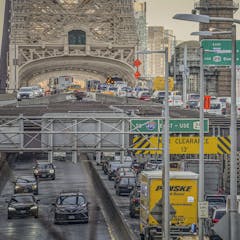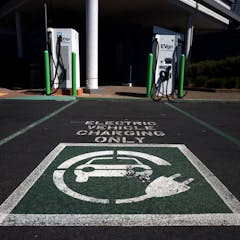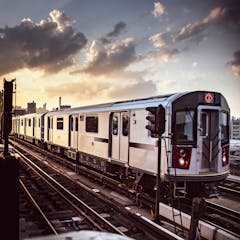
Articles on Public transit
Displaying 1 - 20 of 44 articles

On-demand transit services use smart devices and real-time network information to schedule rides for passengers.

One more reason not to drive into midtown Manhattan: Soon it will cost an extra $15 as New York City launches its long-debated congestion pricing system.

Decades of activism have resulted in legislation and infrastructure to make cities more accessible, but the lived experiences of disabled residents shows there’s still a long way to go.

The COVID-19 pandemic affected college towns profoundly and highlighted the complex relationship between universities and their host communities.

Communities and employers miss out when they don’t embrace disabled employees. Companies must be supportive and proactive about including and accommodating people with disabilities.

Transportation apps can make public transit more accessible for riders with disabilities. But many apps remain inaccessible due to the cost of adding features and the lack of regulations.

Crowding is increasingly affecting all kinds of public lands. Adjoining communities need to find ways to manage it, or risk harm to the attractions that make them a destination.

There is a continuing misunderstanding of rural realities by policymakers. Ultimately this puts transit out of reach for many rural areas.

High-quality bus service is the fastest route to rapid, comprehensive public transit in the United States. This country was once a leader in bus transit, and with adequate funding, it could be again.

If the EV transition focuses exclusively on drivers in privately owned cars, it won’t meet many Americans’ mobility needs, particularly in underserved communities.

In a housing crisis, publicly owned land should never be sold to private developers and should instead be used to build the kind of housing the market is unwilling and unable to build.

Rather than promoting individual electric vehicles for lower-income consumers, governments should fund electric public transit instead.

Public buses, subways and trains are relatively safe, fast and cheap. But competition from rideshares and concerns over COVID-19 will soon see some local agencies short of funds.

Moving around cities will change in the future as new technologies like self-driving cars gain wider adoption. Science fiction can give us a glimpse into these futures.

Some excellent ideas were proposed during the Ontario election on everything from transit to housing. Here’s why the rest of Canada would be wise to consider them.

Studies show that when people can ride in a car without having to operate it, they increase their car use. That could increase traffic and pollution, unless government puts a price on car travel.

Two urban policy experts explain why taking down highways that have isolated low-income and minority neighborhoods for decades is an important part of the pending infrastructure bill.

Increasing even part-time remote work disrupts public transit revenue. Agencies need to adapt fare structures and business models to meet the changing work market.

The pandemic offered a tantalizing look at city life with fewer cars in the picture. But with traffic rebounding, there’s limited time to lock in policies that make streets more people-friendly.

Many communities in Canada currently lack intercity and regional transportation. A national public transportation system would improve connectedness between cities and access to essential services.
